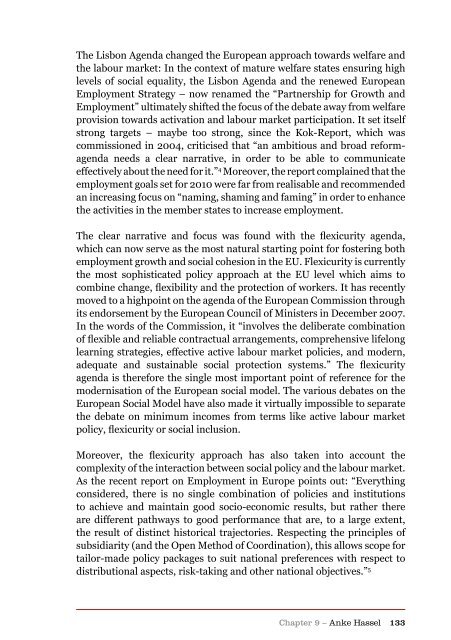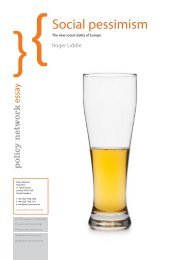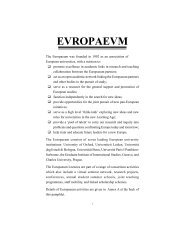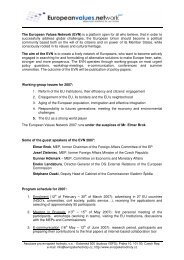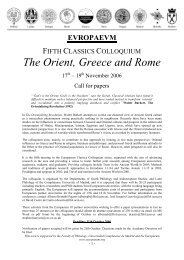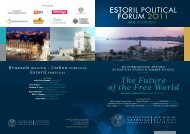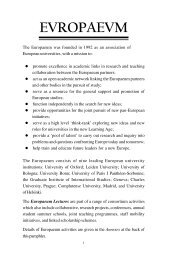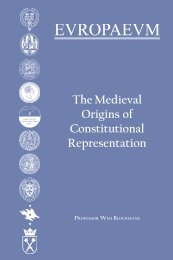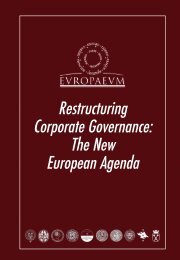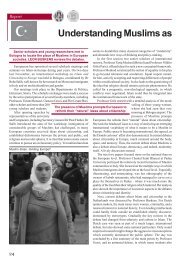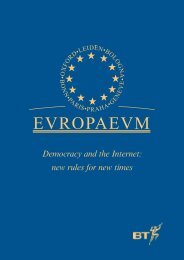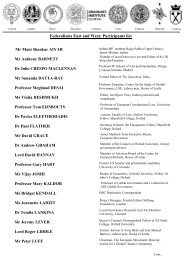Authors Iain Begg | Gabriel Glöckler | Anke Hassel ... - The Europaeum
Authors Iain Begg | Gabriel Glöckler | Anke Hassel ... - The Europaeum
Authors Iain Begg | Gabriel Glöckler | Anke Hassel ... - The Europaeum
You also want an ePaper? Increase the reach of your titles
YUMPU automatically turns print PDFs into web optimized ePapers that Google loves.
<strong>The</strong> Lisbon Agenda changed the European approach towards welfare and<br />
the labour market: In the context of mature welfare states ensuring high<br />
levels of social equality, the Lisbon Agenda and the renewed European<br />
Employment Strategy – now renamed the “Partnership for Growth and<br />
Employment” ultimately shifted the focus of the debate away from welfare<br />
provision towards activation and labour market participation. It set itself<br />
strong targets – maybe too strong, since the Kok-Report, which was<br />
commissioned in 2004, criticised that “an ambitious and broad reformagenda<br />
needs a clear narrative, in order to be able to communicate<br />
effectively about the need for it.” 4 Moreover, the report complained that the<br />
employment goals set for 2010 were far from realisable and recommended<br />
an increasing focus on “naming, shaming and faming” in order to enhance<br />
the activities in the member states to increase employment.<br />
<strong>The</strong> clear narrative and focus was found with the flexicurity agenda,<br />
which can now serve as the most natural starting point for fostering both<br />
employment growth and social cohesion in the EU. Flexicurity is currently<br />
the most sophisticated policy approach at the EU level which aims to<br />
combine change, flexibility and the protection of workers. It has recently<br />
moved to a highpoint on the agenda of the European Commission through<br />
its endorsement by the European Council of Ministers in December 2007.<br />
In the words of the Commission, it “involves the deliberate combination<br />
of flexible and reliable contractual arrangements, comprehensive lifelong<br />
learning strategies, effective active labour market policies, and modern,<br />
adequate and sustainable social protection systems.” <strong>The</strong> flexicurity<br />
agenda is therefore the single most important point of reference for the<br />
modernisation of the European social model. <strong>The</strong> various debates on the<br />
European Social Model have also made it virtually impossible to separate<br />
the debate on minimum incomes from terms like active labour market<br />
policy, flexicurity or social inclusion.<br />
Moreover, the flexicurity approach has also taken into account the<br />
complexity of the interaction between social policy and the labour market.<br />
As the recent report on Employment in Europe points out: “Everything<br />
considered, there is no single combination of policies and institutions<br />
to achieve and maintain good socio-economic results, but rather there<br />
are different pathways to good performance that are, to a large extent,<br />
the result of distinct historical trajectories. Respecting the principles of<br />
subsidiarity (and the Open Method of Coordination), this allows scope for<br />
tailor-made policy packages to suit national preferences with respect to<br />
distributional aspects, risk-taking and other national objectives.” 5<br />
Chapter 9 – <strong>Anke</strong> <strong>Hassel</strong> 133


